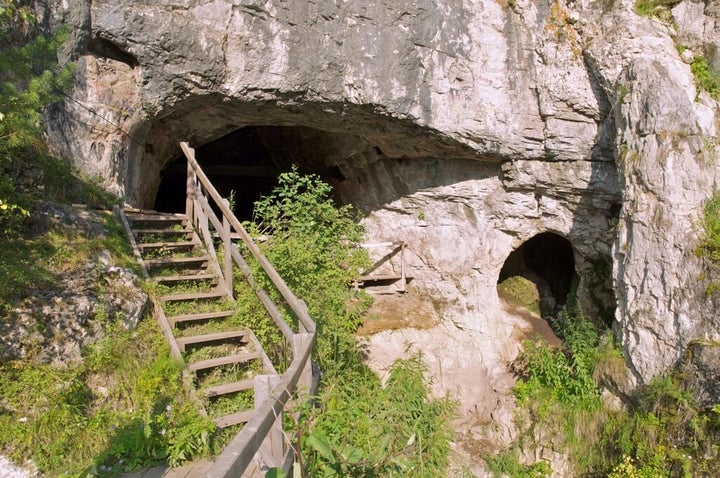
Thanks to a single tooth, scientists are now sinking their teeth into a human family tree mystery -- exactly who were the Denisovans?
Our distant cousin the Denisovan, an extinct hominid species, came to light in 2008 when a fossilized tooth and a piece of finger bone was discovered at Denisova Cave in the Altai Mountains of southern Siberia. And in 2010, another fossilized tooth was found.
Since the discoveries, the species has remained somewhat of a mystery. However, a new analysis of one of the molars, published Monday in the Proceedings of the National Academy of Sciences, is offering unprecedented insight into the strange species. The research shows that they may have interbred with Neanderthals, early Homo sapiens, and possibly even another group of ancient hominins that has yet to be identified.
"Together with Neanderthals, their sister group in western Asia and Europe, they are the closest relatives of all people alive today," Svante Pääbo, geneticist at the Max Planck Institute for Evolutionary Anthropology in Leipzig, Germany, and a co-author of the research, told The Huffington Post in an email. "So they are one of our closest relatives, but not our ancestors."

Pääbo and his colleagues extracted DNA from the tooth, called Denisova 8, by using a sterile dentistry drill to take out a few milligrams of material from the fossil. They then sequenced the DNA found in the molar.
The researchers were surprised to discover that Denisova 8 dates back as far 110,000 years, making it much older than the other molar and finger fossils, which are about 50,000 years old.
"One of the three individuals we studied lived perhaps as much as 60,000 years earlier than the other two individuals," Pääbo said. "This shows that the Denisovans were present in the Altai Mountains in southern Siberia over a very long time, or at least that they were there periodically, over a long time."
Scientists also believe that the Denisovans may have traveled further south beyond southern Siberia, and evidence of this migration is seen today as pieces of DNA identical to Denisovan DNA can be found in modern-day New Guineans, Polynesians, Australian Aborigines, and other Asian populations, "For example in Tibet where an adaption to live at high altitudes where there is little oxygen in the air has been shown to come from Denisovans," Pääbo said.

The researchers also found in the DNA analysis some clues about who the Denisovans interbred with, including a lesser known branch of the human family tree not yet identified by scientists or from fossils, Science magazine reported.
"If you would have told me five years ago I would be talking about [a] species we don’t have any fossils for, I would have thought you were crazy," Dr. Todd Disotell, a molecular anthropologist at New York University, who was not involved in the new research, told The New York Times.
Scientists believe that Neanderthals and Denisovans diverged from modern humans on the human family tree 400,000 years ago, according to the Times, and as each species evolved there is growing evidence that they interacted.
"Denisovans were quite diverse genetically, much more so than Neanderthals," Dr. Bence Viola, paleoanthropologist at the University of Toronto and a co-author of the research, told HuffPost. Such diversity suggests that there must have been many Denisovans over quite a long time.
"The world at that time must have been far more complex than previously thought," Susanna Sawyer, geneticist at the Max Planck Institute for Evolutionary Anthropology and lead author of the research, told National Geographic. "Who knows what other hominids lived and what effects they had on us?"

The researchers hope to find more Denisovan fossil specimens, which may help to unravel more details about our early relatives.
"We hope that when we now publish the features of these teeth others will recognize similar teeth from other sites that may be from Denisovans," Pääbo said.
Also on HuffPost:

